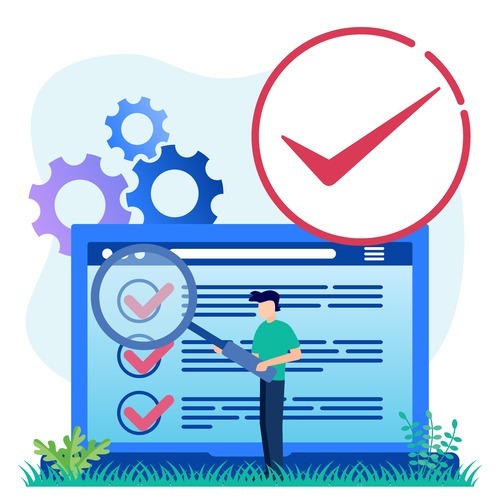Thinking about hiring a Ruby on Rails developer? It’s a big decision with a lot of factors to consider. Beyond just their technical skills, you may also worry that the developer truly understands your project needs. Don’t panic – many feel the same. This article will guide you on what to think about, making the hiring process smoother.
At Mallow, we’ve got a solid history of creating innovative solutions with Ruby on Rails. We know the framework inside out and the challenges of web projects. With our experience in helping many companies through hiring, we’re here to give you straightforward tips for hiring a Ruby on Rails developer.
After reading this, you’ll have practical tips for hiring a Ruby on Rails developer that fits your project. This will help you make smart decisions, ensuring you get great results and a good return on your investment.
What are the common mistakes to avoid when you hire Ruby on Rails developers?
When hiring Ruby on Rails developers, it’s important to avoid common mistakes that could disrupt your process. By steering clear of these pitfalls, you increase your chances of finding the right candidates and fostering a successful collaboration. Here are some mistakes to watch out for:
- Not providing a clear and detailed outline of your project requirements to potential Ruby on Rails developers can lead to misunderstandings and mismatched expectations regarding deliverables, timelines, and project scope.
- Ignoring whether the Ruby on Rails developer’s skills and expertise align with your existing technology stack can result in integration challenges and inefficiencies during the development process.
- Not thoroughly assessing candidate’s technical proficiency in Ruby on Rails, including their experience with relevant frameworks, libraries, and tools, can result in hiring developers who may not have the necessary skills to deliver high-quality code.
- Overlooking candidate’s past project experience and track record of success in developing Ruby on Rails applications can lead to hiring developers who may lack the practical experience or expertise needed for your specific project requirements.
- Neglecting to assess a candidate’s communication skills and failing to establish clear protocols for interacting with remote Ruby on Rails developers can result in communication gaps, misunderstandings, and delays in project coordination, hindering progress and teamwork. A study by the International Journal of Project Management found that effective communication is a critical factor in the success of remote development teams.
- Neglecting to discuss and establish expectations regarding data security, confidentiality, and intellectual property rights with potential Ruby on Rails developers can pose risks to your project’s sensitive information and proprietary assets.
- Not developing detailed contractual agreements and Service Level Agreements (SLAs) to formalize project terms, deliverables, timelines, payment schedules, and dispute resolution procedures can result in misunderstandings, disputes, and legal issues later on.
- Disregarding whether potential Ruby on Rails developer’s work culture, values, and communication styles align with your company’s culture and team dynamics can lead to compatibility issues, conflicts, and reduced productivity within the development team.
- Neglecting to discuss and plan for post-launch support and ongoing maintenance with potential Ruby on Rails developers can lead to difficulties in addressing bugs, updates, and ensuring the long-term performance of your application after the initial development phase
By keeping these common mistakes in mind and following the tips outlined in this article, you can navigate the hiring process with confidence and build a strong team of Ruby on Rails developers that will contribute to the success of your project.
Check out here to know more about 5 common challenges when hiring a Ruby on Rails developer and how to mitigate them.
9 key tips to keep in mind when hiring Ruby on Rails developers
When choosing a Rails expert, take into account your budget, project requirements, objectives, and the developer’s proficiency.
Here are the top 9 tips to help you hire Ruby on Rails developers that will fit well with your team or project.
Establish clear project requirements

Clear and detailed requirements empower developers to understand the scope, goals, and expectations of the project.
Here’s how to establish clear project requirements:
-
- Detailed project scope – Clearly outline the features, functionalities, and deliverables expected from the Ruby on Rails development project. Break down the requirements into granular tasks, providing a roadmap for both you and the developers.
-
- Technical specifications – Specify the technical aspects of the project, including preferred technologies, frameworks, and integrations. If there are specific Ruby on Rails versions or gems that should be used, communicate these preferences to align the development with your tech stack.
-
- Performance and scalability needs – Clearly express any performance or scalability requirements for the application. Discuss expected user loads, response times, and scalability considerations. This ensures that the chosen Ruby on Rails developers are equipped to handle the anticipated demands.
By investing time in establishing clear project requirements, you provide a solid foundation for any Ruby on Rails developer to deliver a product that aligns with your vision, expectations, and business objectives. This clarity helps minimize misunderstandings, reduces the risk of scope creep, and ensures that the final deliverables align with your objectives.
Therefore, defining precise project requirements is crucial for facilitating a smooth and effective development process. Additionally, clear requirements promote more effective collaboration and streamline the development process.
Define clear communication protocols
When outsourcing Ruby on Rails development, robust communication protocols are essential to bridge potential gaps in time zones, language, and project understanding.
Make sure you:
-
- Define communication channels – Clearly specify the primary communication channels to be used, whether it’s email, project management tools, chat platforms, or video conferencing. Ensure that these channels are easily accessible to all team members.
-
- Documentation and reporting formats – Clearly define the format for documentation and progress reporting. This includes status reports, project updates, and any other relevant documents. Standardizing these formats enhances clarity and makes information easily digestible.
-
- Time zone considerations – Acknowledge and address time zone differences upfront. Establish expectations regarding overlapping work hours for real-time collaboration, and make use of asynchronous communication methods when necessary.
Wondering how to overcome timezone differences when hiring Ruby on Rails developers? Check out this article on how to handle timezone differences while working with an offshore application development team.
- Time zone considerations – Acknowledge and address time zone differences upfront. Establish expectations regarding overlapping work hours for real-time collaboration, and make use of asynchronous communication methods when necessary.
-
- Emergency communication plan – Develop a plan for emergencies that may require immediate attention. Clearly communicate the escalation process, emergency contact points, and the expected response time in case of critical issues.
-
- Language and cultural considerations – Acknowledge language and cultural differences, ensuring that communication is inclusive and easily understood by all team members. Encourage an open dialogue that accommodates diverse perspectives and experiences.
Ensure the security and confidentiality

Prioritizing security and confidentiality is paramount to safeguard your project, data, and intellectual property. According to the 2023 IBM Cost of a Data Breach Report, the average cost of a data breach is $4.45 million, making stringent security practices essential to protect your business assets.
Here’s a detailed guide to help you navigate this critical aspect of the hiring process:
-
- Data protection compliance – Verify that the Ruby on Rails developers adhere to data protection regulations relevant to your project. This includes compliance with laws like GDPR, HIPAA, or other industry-specific standards, depending on the nature of your application.
-
- Securing APIs and third-party integrations – If your Ruby on Rails application involves APIs or third-party integrations, inquire about the measures taken to secure these interactions. Verify their understanding of OAuth, API tokenization, and other security protocols for seamless yet secure data exchanges.
-
- Regular security audits and penetration testing – Confirm that the developers conduct regular security audits and penetration testing on their applications. This proactive approach helps identify vulnerabilities and weaknesses in the system, allowing for timely remediation.
-
- Non-Disclosure Agreements (NDAs) and confidentiality policies – Clearly define and sign Non-Disclosure Agreements (NDAs) to legally bind the developers to maintain the confidentiality of your project details. Additionally, discuss their internal confidentiality policies and measures in place to safeguard client information.
By implementing these strategies and measures, you can build a safe and secure application that protects sensitive information from unauthorized access, data breaches, and other security threats. Ensuring that developers have a strong understanding of security best practices and are committed to maintaining confidentiality can help protect sensitive information and mitigate the risk of data breaches or unauthorized access.
By prioritizing security and confidentiality during the hiring process, you can instill trust and confidence in the development team and safeguard the integrity of your project and intellectual assets.
Prioritize soft skills
Prioritizing soft skills is crucial for building a cohesive and effective development team. Here’s some guidance on how to identify soft skills:
-
- Behavioral interview questions – Include behavioral interview questions that focus on past experiences and situations. Ask candidates to share examples of how they have handled challenges, worked in a team, or communicated with clients in the past.
-
- Teamwork and collaboration exercises – Incorporate teamwork exercises or collaborative coding sessions during the hiring process. This provides insights into a candidate’s ability to work well with others and contribute positively to a team.
-
- Client-facing scenarios – For roles involving client interaction, simulate client-facing scenarios during the interview process. This can include discussing how candidates would handle client feedback, communicate project updates, and manage client expectations.
Check the developer’s agile practices
Agile development methodologies are crucial for delivering projects efficiently, adapting to changing requirements, and maintaining a high level of collaboration. Focus on the following aspects related to Agile practices:
-
- Experience with scrum or kanban – Inquire about the developer’s experience with popular Agile frameworks like Scrum or Kanban. Understanding how they’ve applied these methodologies in previous projects can provide insights into their approach to project management. The Agile Alliance defines key Scrum practices and roles that enhance team collaboration, productivity, and project visibility in agile development environments.
-
- Adaptability to change – Agile methodologies embrace change and encourage teams to adapt quickly to evolving requirements. Look for developers who have demonstrated flexibility and adaptability in previous projects, showcasing their ability to handle changing priorities.
-
- Collaborative tools proficiency – Agile teams commonly use collaboration tools such as Jira, Trello, or Asana. Ensure the developer is familiar with these tools and has experience using them to manage tasks, track progress, and facilitate communication within the team.
-
- Cross-functional collaboration – Agile teams often consist of cross-functional members. Assess the candidate’s ability to collaborate with professionals from different disciplines, such as UX/UI designers, QA engineers, and product managers, to achieve cohesive development outcomes.
Ensure the transparent project management
Transparent project management is another crucial factor for success. Here’s an elaboration on how to ensure transparent project management during the hiring process:
-
- Status updates and reporting – Request examples of how candidates provide status updates and reports. Transparent developers should be able to articulate progress, challenges, and proposed solutions in a manner that is clear and comprehensible to stakeholders.
-
- Risk management – Discuss their approach to risk management. Transparent project managers should be proactive in identifying potential risks, proposing mitigation strategies, and keeping stakeholders informed about potential impacts on the project timeline or scope.
Transparent project management goes beyond simple task tracking; it involves clear communication, proactive issue resolution, and a commitment to keeping stakeholders informed. By focusing on these aspects during the hiring process, you increase the likelihood of finding Ruby on Rails developers who contribute to the success of your projects through effective and transparent project management.
Evaluate the code quality and testing standards

Prioritizing code quality and adherence to testing standards is crucial for the success and longevity of your project when hiring Ruby on Rails developers. Here’s how you can evaluate and ensure code quality and testing standards in your potential hires:
-
- Review past projects – Examine the developer’s past projects and code samples. Look for well-structured, readable code that follows Ruby on Rails conventions. Assess their use of best practices, modular design, and adherence to coding standards.
-
- Ask about testing practices – Inquire about the candidate’s approach to testing. A proficient Ruby on Rails developer should be familiar with testing frameworks like RSpec or MiniTest. Ensure they emphasize the importance of writing both unit and integration tests for robust code.
-
- Code reviews and collaboration – Ask about the candidate’s experience with code reviews. Developers who actively participate in code reviews demonstrate a commitment to improving code quality and benefiting from collective expertise.
-
- Testing for edge cases – Inquire about the candidate’s approach to testing edge cases and handling exceptional scenarios. Strong Ruby on Rails developers anticipate potential issues and ensure their applications are resilient in various conditions.
Develop detailed legal agreements and SLAs
Establishing clear legal agreements and Service Level Agreements (SLAs) is a crucial step when working with any third-party developer These will safeguard your investment, help manage expectations, and foster a successful collaboration.
Here’s how you should address this aspect:
-
- Comprehensive contractual agreements – Craft a detailed contract that explicitly outlines the terms and conditions of the engagement. Cover essential elements such as project scope, deliverables, timelines, payment schedules, and termination clauses. This document serves as a roadmap, preventing misunderstandings and providing a solid foundation for collaboration.
-
- Intellectual Property (IP) rights – Clearly define the ownership and usage rights of intellectual property generated during the project. This includes code, design elements, and any custom solutions. Ensure that the contract specifies the transfer of ownership to your company upon project completion.
-
- Termination clauses and exit strategies – Include well-defined termination clauses and exit strategies in case either party needs to end the engagement prematurely. Clearly outline the conditions under which termination is permissible and the process for transitioning responsibilities.
-
- Service Level Agreements (SLAs) – Define specific Service Level Agreements that outline the expected performance standards, including response times, issue resolution, and communication protocols. SLAs set clear expectations for both parties and provide a framework for measuring the success of the collaboration.
-
- Payment structures and milestones – Clearly articulate the payment structure, specifying milestones and corresponding payments. This ensures a fair and transparent payment process tied to achieving tangible project milestones, motivating developers and aligning financial interests.
By carefully addressing these aspects within legal agreements and SLAs, you can safeguard your investment by outlining the terms and conditions of the collaboration, including project scope, timelines, deliverables, and payment terms. Additionally, such agreements help manage expectations by providing clarity on what both parties can expect from the collaboration. By setting clear guidelines and expectations upfront, you can effectively mitigate risks, ensure accountability, and foster a successful and productive collaboration.
Verify the technical expertise

Last but not least, assessing technical expertise is paramount to ensure a successful collaboration. When evaluating Ruby on Rails developers for hire, prioritize their expertise in mastering the Rails framework. Look for candidates who demonstrate a deep understanding of Rails conventions, structures, and built-in functionalities. They should be adept at leveraging these elements to streamline development processes efficiently.
Assess their familiarity with key aspects of Rails, such as routing, ActiveRecord, and ActionView, and their ability to adhere to best practices like DRY (Don’t Repeat Yourself) and convention over configuration. By ensuring that developers possess a strong grasp of the Rails framework, you can trust in their ability to deliver high-quality, maintainable code for your projects.
Technical proficiency in Ruby on Rails, along with proficiency in related technologies and frameworks, is crucial for delivering high-quality and efficient solutions.
How can you choose the right application development team?
By now that you’ve familiarized yourself with key tips for hiring a skilled Ruby on Rails developer, the natural next question is how to discover the perfect partner who aligns seamlessly with your project goals. While the hiring process may be simplified with these insights, identifying the right application team remains crucial.
To simplify your search for the perfect partner, check out this article on choosing the right application development team: a step-by-step guide. It offers practical advice and useful strategies to guide you in finding the right fit for your project. Whether aligning with your goals or ensuring smooth collaboration, this article is designed to make your journey toward building the ideal application team both straightforward and productive.
Still, trying to figure out how to proceed further with the outsourcing of Ruby on Rails development? Feel free to reach out to our team.
Your queries, our answers
No, Ruby on Rails is not a dying language. While newer frameworks have emerged, Ruby on Rails continues to be widely used, particularly for web applications that require rapid development and scalability. The community around Ruby on Rails remains active, and the framework is regularly updated with new features and security improvements. Check out here to know if Ruby on Rails is still relevant in 2025 and explore its current state and future prospects.
Mallow prioritizes security in every stage of development. We implement best practices like data encryption, secure authentication methods, and regular security audits. Ruby on Rails also has built-in security features, such as protection against SQL injection and cross-site scripting, which we utilize to safeguard your application.
The cost of building a Ruby on Rails application varies depending on the project's complexity, features, and scope. For a basic MVP, the cost ranges from $20,000 to $40,000 for a web app. For more complex applications, the cost can be significantly higher. We provide a detailed and transparent cost breakdown tailored to your specific requirements. Check out here to find out how much building a Ruby on Rails project with Mallow costs.
Yes, Mallow can integrate various third-party services, such as payment gateways, APIs, and external databases, into your Ruby on Rails application. Our team ensures seamless integration to enhance the functionality and user experience of your application.
Yes, we can align our working hours with your time zone to facilitate effective communication throughout the development process. Check out here to know how to handle the timezone difference.
Mallow offers the following outsourcing models: Project-based outsourcing, Staff augmentation, & Dedicated development team (DDT)
Ruby on Rails is a versatile framework that can be adapted to a wide range of projects. It excels in rapid development, making it suitable for startups, MVPs, and complex web applications. Whether you're building a large-scale e-commerce platform or a custom content management system, Ruby on Rails provides the flexibility and efficiency needed to support your project.
Mallow's development team is experienced in designing and implementing scalable Ruby on Rails applications. We use a combination of efficient code architecture, database optimization, and cloud infrastructure to ensure your application can scale to meet growing user demands without compromising performance.
The development timeline varies depending on the complexity and scope of the project. For a basic MVP, it might take around 3 to 6 months. More complex applications with advanced features could take longer. We work closely with you to establish a realistic timeline and keep you informed throughout the development process.
At Mallow, we emphasize thorough testing and quality assurance to ensure the reliability and performance of your Ruby on Rails application. Our QA team conducts various tests, including unit testing, integration testing, and end-to-end testing, to identify and fix issues before deployment.
No, we don’t provide off-the-shelf products. We are custom software solution providers who tailor applications in a customized way as you desire. However, we can create personalized applications tailored to your unique needs, providing you with a fully customized experience when using the application.
Yes, you can hire a dedicated Ruby on Rails developer or a team of developers from Mallow. This allows you to have a dedicated resource working exclusively on your project, providing more control and flexibility over the development process. Check out our article on the top 9 things to consider as you plan to hire a Ruby on Rails developer for more insights.
Author
Jagajeevan
Jagan is a successful project manager with over 8 years of experience at Mallow Technologies. With his strong leadership skills and meticulous approach to project management, Jagan has consistently delivered successful outcomes for a diverse range of client engagements. Throughout his career, Jagan has been responsible for overseeing complex projects from inception to completion. His excellent communication skills and collaborative approach enable him to understand client requirements, effectively communicate project progress, and address any concerns that may arise. Outside of his work, Jagan is an avid reader and finds solace in the world of books during his free time. He believes in continuous learning and stays updated with industry trends, management methodologies, and leadership practices through his reading habits.



